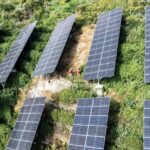“Did you manage to get tickets?” seems to have become the hottest greeting recently. This summer, from the grasslands of Zhangbei to the starry skies of Dunhuang, from the old Russian-style balconies of Harbin to the sandy beaches of Dong’ao Island in Zhuhai… Performance-driven tourism, represented by music festivals and concerts, has attracted an increasing number of travelers willing to journey far and wide. The captivating melodies and beautiful notes not only resonate with audiences but also “awaken” the summer cultural and tourism market.
Why is the summer performance market so booming? Behind this lies the surge in travel among younger consumers. According to the “2024 Large-Scale Commercial Performance Market Trends and Characteristics Analysis” released by the China Performance Industry Association, 36.2% of attendees at large music festivals are aged 18–24. Mostly students, this group fills their schedules with concerts and festivals, often traveling to new cities just for an event. With ample free time during summer break, they chase their passions and dreams.
What makes music festivals and similar events so appealing to younger generations? Perhaps it’s their desire to break away from conventional tourist spots and seek emotional release. Under open skies and on vast stages, they wave glow sticks to energetic beats, swaying to the rhythm, their emotions blooming freely. Immersed in a sea of music and lights, the spiritual fulfillment from such experiences is irresistible to young hearts.
The charm of music festivals also lies in their fusion with cultural elements like intangible heritage, blending tradition and modernity for a fresh consumer experience. At the Shanghai Spring Music Festival, the concert “Southern Melody · National Colors” used AI to transform ancient Nanyin music scores into visual totems, recreating Fujian’s historic architecture through holograms, revitalizing centuries-old elegance in contemporary theaters. In Jinhua, Zhejiang, the rhythmic patterns of Wu opera gongs were sampled into electronic music loops, creating regionally distinctive digital music products. Who wouldn’t love such novelty?
Music festivals across regions also incorporate local flavors, enriching urban leisure with cultural vibes. At Shanghai’s Jiangwanli Music Festival, the “Tipsy Market” scattered around the venue featured craft beers, specialty drinks, and creative products, drawing busy office workers for casual gatherings. Guiyang’s “Meet Blueberry Music Festival” offered dozens of local Guizhou snacks and beverages, treating fans to a feast for both taste buds and ears.
Today, cultural tourism has shifted from “resource-driven” to “emotion-driven.” Transforming cultural DNA into tangible emotional symbols is key to breaking industry homogenization. When Dunhuang murals become touchable emotional carriers via VR, or when Lusheng melodies by Miao village bonfires go viral on short-video platforms, we witness not just innovative consumption scenarios but also the creative rebirth of cultural heritage in the digital age.
In Nanning, Jay Chou’s concert drew 140,000 out-of-town visitors, directly boosting local spending by 1.263 billion yuan. In Chengdu, hotel bookings in popular business districts surged 140% during Jacky Cheung’s concert… The multiplier effect of cultural consumption has cities eyeing the growth potential of performance-driven economies. Hainan’s “Ticket Perks” offer discounts at tourist attractions for concertgoers, while Xiamen integrates shows with duty-free shopping and ride subsidies. This “performance + tourism + consumption” model elevates cultural events from standalone attractions to catalysts for broader economic activation.
When music festival stages become labs for living heritage, and concert waves awaken cultural genes, we see more than just economic growth. As technology spreads and “culture+” models deepen, intangible heritage and similar elements will unleash even greater multiplier effects in the digital economy, allowing cultural roots to grow deeper and stronger in fertile economic soil.





